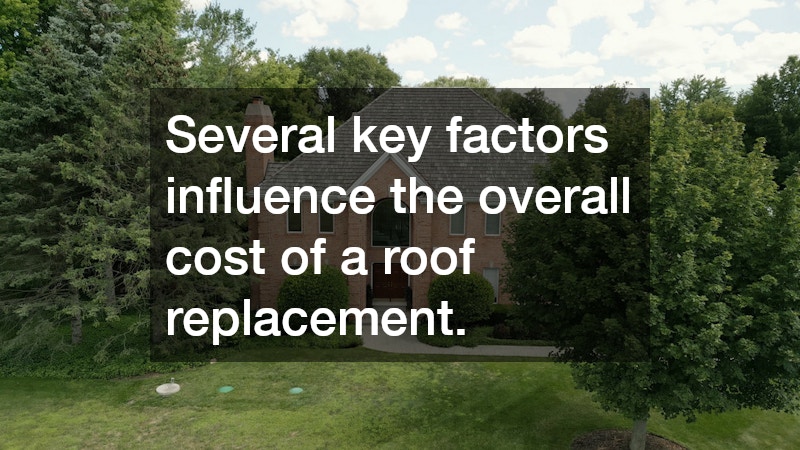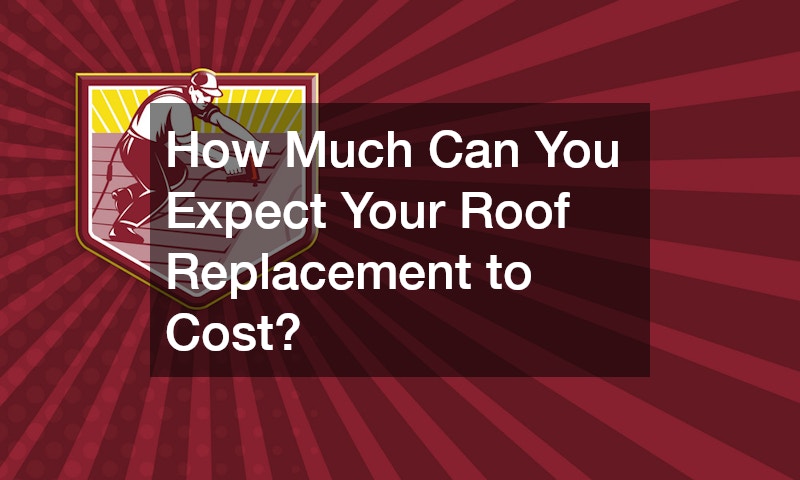When it comes to owning a home, one of the most significant investments you might face is a roof replacement. Over time, exposure to weather elements such as rain, wind, and hail can deteriorate the materials, reducing their effectiveness. Consequently, understanding the costs involved in replacing your roof can help you budget better and plan ahead for this essential home maintenance task.
Roof replacements generally involve the removal of the old roofing materials, examination of the underlying structure, and installation of new materials. The complexity of this process can vary significantly depending on several factors, including the size of your roof, the materials you choose, and the local labor costs.
Researching your options can offer valuable insights into the most suitable choice for your home and budget.
Additionally, it is crucial to consider the regional climate and the typical lifespan of the roofing materials in your region. While it might be tempting to delay a roof replacement, postponing necessary repairs can lead to more significant structural issues over time. Investing in a high-quality roof replacement can save you money in the long run by reducing maintenance expenses and enhancing your home’s energy efficiency.
Factors Influencing the Cost of Roof Replacement
Several key factors influence the overall cost of a roof replacement. An essential aspect to consider is the size and pitch of your roof, as larger and steeper roofs generally require more materials and labor, driving up costs. It’s also crucial to factor in the type of roofing materials you opt for, as these will significantly impact not only the upfront expense but also the longevity and performance of the new roof.
Moreover, the cost of labor can fluctuate depending on your location, as different regions have different rates for skilled roofing professionals. Additionally, any additional features or customizations, such as skylights or specialized roof coatings, can increase the final price. Homeowners should also be aware of potential hidden costs, such as repairs to the underlying structure or unexpected weather-related delays.
Obtaining multiple quotes from reputable roofing contractors can provide a general idea of the expected costs and help you identify any red flags in pricing. It’s advisable to choose contractors who offer transparent pricing and detailed estimates that cover all aspects of the project. This approach will not only help you understand the financial commitment involved but will also ensure you are making a more informed decision regarding your roof replacement.
Popular Roofing Materials and Their Costs
When planning for a roof replacement, it’s essential to consider the various roofing materials available on the market and their respective costs. Asphalt shingles, for example, are among the most popular choices for homeowners due to their affordability and ease of installation. On average, asphalt shingle roofs can range from $5,000 to $10,000, depending on the roof size and shingle type.
For those interested in more durable and long-lasting materials, metal roofing is an excellent option, with an average cost range of $10,000 to $20,000. Metal roofs offer superior weather resistance, increased energy efficiency, and can last up to 50 years with proper maintenance. However, the initial investment is significantly higher compared to asphalt shingles, making it essential to weigh the long-term benefits against the upfront costs.
Alternatively, homeowners looking for premium options may consider materials like slate or tile, which can range from $15,000 to $30,000 or more. Slate and tile roofs provide an aesthetic appeal and impressive durability, often exceeding 50 years of lifespan. While these materials are among the most expensive, they require minimal maintenance and can significantly enhance a home’s market value.
Budgeting for Your Roof Replacement
Effective budgeting is crucial when planning a roof replacement, and it begins with a comprehensive understanding of the associated costs. Setting aside funds specifically for this home improvement project can prevent financial strain and provide peace of mind. Ideally, a contingency fund of at least 10% of the estimated costs should also be factored in to cover any unexpected expenses that may arise during the project.
Homeowners should also consider exploring various financing options if the upfront costs are prohibitive. Some contractors offer payment plans or financing programs that allow you to spread the payments over time. Additionally, certain government programs or rebates are available that offer financial assistance or tax credits for energy-efficient roofing upgrades.
Ultimately, investing in a roof replacement should be viewed as a long-term commitment to your property’s value and safety. Proper maintenance and timely replacements can prevent costly repairs and protect your home from potential damages caused by a failing roof. By thoroughly researching options and planning your budget carefully, you can ensure a smooth and successful roof replacement process.
Deciding to replace your roof is a significant decision that affects your home’s overall value, safety, and aesthetic appeal. Understanding the factors that influence the cost and evaluating the various materials and labor considerations can empower you to make informed choices. It’s always advisable to work with experienced roofing professionals who can provide expert guidance and ensure the job is completed to the highest standards.
As you embark on this home improvement project, remember that the key to a cost-effective roof replacement is thorough research and strategic planning. Gathering multiple estimates, considering all financing options, and adequately preparing your budget are vital steps towards achieving a successful outcome. A well-maintained and high-quality roof can enhance your home’s energy efficiency, curb appeal, and market value.
In conclusion, while the costs of a roof replacement can vary, taking the time to explore your options can pay off in the long run, ensuring your home remains a safe and secure environment for years to come. By staying informed and proactive about your roof replacement needs, you can minimize surprises and make the best choices for your property and financial situation. Roof replacements, when planned and executed thoughtfully, represent an investment in your home’s future.






